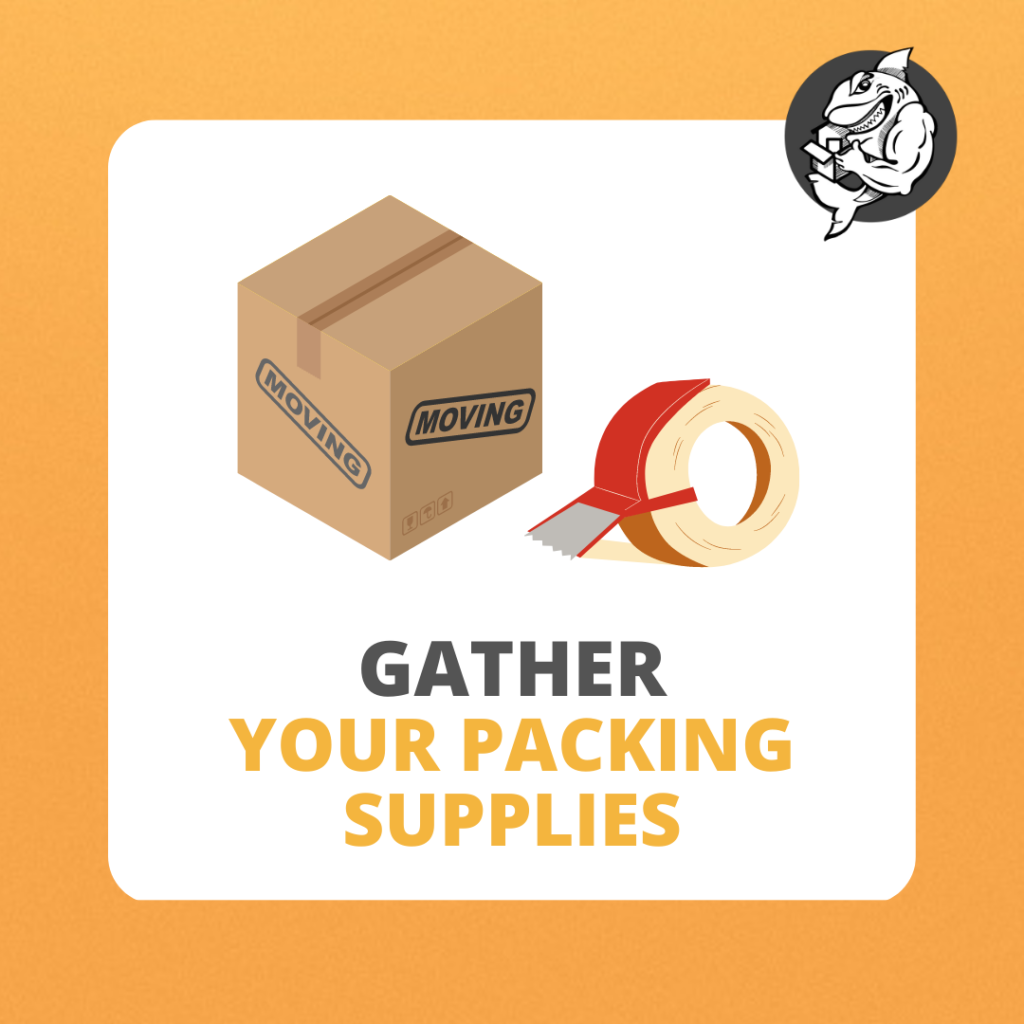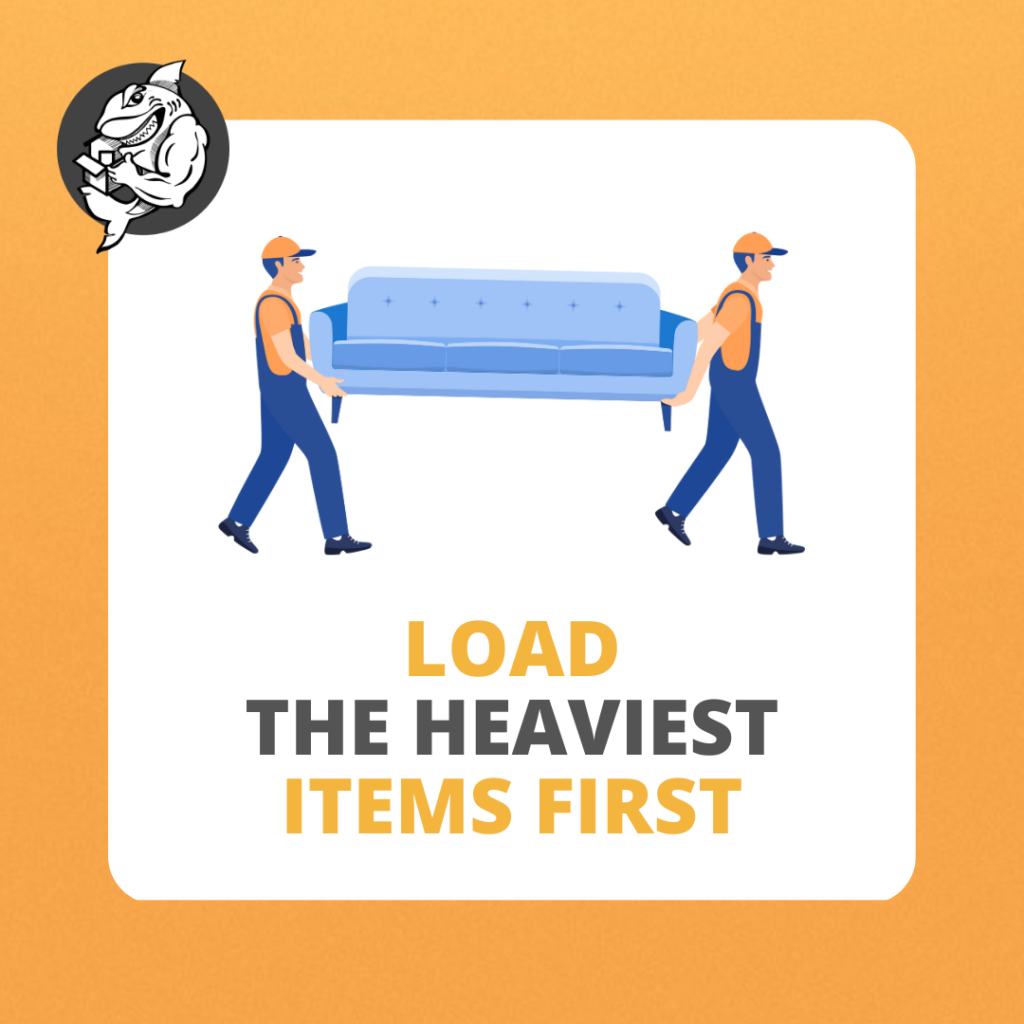“Moving is like a game of Tetris: the better you pack, the higher your score! And remember, we’re here to help you level up.” – Qshark Moving Company CEO Uladzislau Kandybovich

Ah, the dreaded moving day. Whether you’re embarking on a long-distance moving adventure, a local move, or simply relocating to a new apartment down the street. It can be an overwhelming and often exhausting experience. But worry not because we’ve got your back. In this article, we’ll provide a step-by-step guide on how to load boxes into a moving truck so that you can move like a pro. And for those times when you need extra help, the experts at Qshark Moving Company are here for you.
Step 1: Choose the Right Truck Size
Before you start loading, selecting the right truck size for your move is crucial. You don’t want to end up with a rental truck that’s too small or too big for your belongings. Qshark Moving Company offers a range of truck sizes to accommodate your needs so that you can find the perfect fit. Check out this page for more details on truck sizes.
Step 2: Gather Your Packing Supplies
When it comes to packing and loading a moving truck, quality packing supplies are essential. Boxes, packing paper, bubble wrap, tape, and furniture pads are just a few items to ensure your belongings are well-protected during transit. You can find a complete packing checklist here.

Step 3: Disassemble Large Furniture
To save space in the back of the truck, and prevent damage, it’s a good idea to disassemble large furniture items like bed frames, dressers, and desks. Be sure to keep all the hardware in a labeled bag, so you can easily reassemble the items at your new home. Need help with disassembling furniture? Qshark’s furniture movers can lend a hand.
Step 4: Protect Your Furniture and Fragile Items
One of the most critical aspects when load a moving truck is ensuring that your furniture and fragile items are well-protected. Use furniture pads or moving blankets to wrap large pieces of furniture and secure them with packing tape. For delicate items like glassware, dishes, and mirrors, use bubble wrap or packing paper and place them in sturdy boxes with plenty of cushioning.
Step 5: Load the Heaviest Items First
When it’s time to start loading the truck, begin with the heaviest and largest items, like appliances, large furniture, heavy objects, and packed boxes with heavy belongings. Place these items on the floor of the truck against the walls to create a stable base and distribute the weight of the remaining items evenly. Loading heavy items first also helps to prevent damage to lighter or more fragile items.

Step 6: Fill in the Gaps with Medium-Weight Items
Once the heaviest items are in place, move on to lighter boxes or medium-weight items such as smaller furniture pieces, electronics, and packed boxes with lighter belongings. Stack these items on top of the heavier items or place them in the gaps between large pieces. Be sure to secure them with straps or bungee cords to prevent shifting during transit.
Step 7: Load Lightest Items and Fragile Boxes Last
Finally, load and stack boxes with the heavy stuff under the lightest items and fragile boxes on top of the medium-weight items. This includes items like pillows, linens, and packed boxes with fragile belongings. Be sure to fill any remaining gaps with soft items like blankets or towels to provide additional cushioning and prevent shifting.
Step 8: Secure Everything with Straps or Bungee Cords
Once everything is loaded, take a moment to ensure that all items are secure. Use straps, bungee cords, or ropes to tie down your belongings and prevent them from shifting during the move. Pay special attention to fragile items and make sure they are well-protected and firmly in place.
Step 9: Double-Check Everything Before Closing the Truck
Before you close the truck and hit the road, do a final walk-through to make sure everything is in its proper place and secure. Check that all straps and bungee cords are tight and that no loose items could cause damage during transit. It’s better to be safe than sorry!
Step 10: Drive Carefully and Unload with Caution
Now that your moving truck is expertly loaded, it’s time to hit the road. Remember to drive carefully, especially around corners and over bumps, to avoid any damage to your belongings. When you arrive at your new home, take the same level of care when unloading the truck as you did when loading it. Start with the lightest items and fragile boxes, working your way down to the heaviest items.
Bonus: Consider Hiring Professionals for a Stress-Free Move
While loading a moving truck yourself can be cost-effective, it’s not always the easiest or most efficient way to move. If you want a stress-free moving experience, consider hiring a professional company like Qshark Moving Company. With years of experience in long-distance moving, local moving, and relocation services, Qshark’s team of skilled movers will ensure that your belongings are expertly packed, loaded, and transported to your new home. Visit our website to learn more about our services and get a free quote for your next move.
Extra Bonus: Save Space, Load Boxes Properly
One essential aspect of loading a moving truck efficiently is making the most of the available space by loading boxes properly. When stacking boxes, ensure they’re aligned with other boxes and fit snugly together to minimize wasted space. Place the heaviest boxes at the bottom and lighter boxes on the very top to prevent crushing or damaging your belongings.
Following proper packing tips, such as using packing paper or bubble wrap to fill empty spaces inside boxes, will keep items from shifting during transit and make it easier to stack the boxes in the truck. Additionally, consider using plastic wrap to secure loose or awkwardly-shaped items so they don’t take up unnecessary space or cause damage to other items in the truck. By paying attention to these details, you’ll be able to maximize space and keep your belongings safe throughout the move.
Final Thoughts
Loading a moving truck can be challenging, but with the right approach and a little know-how, you can master the art of moving like a pro. By following this step-by-step guide, you’ll be well on your way to a successful and stress-free move. And remember, if you ever need a helping hand moving labor, the experts at Qshark Moving Company are just a phone call away.

FAQ: Frequently Asked Questions About Loading a Moving Truck
Below are some tips on frequently asked questions and their answers to help you navigate loading a moving truck.
Q: What do you load first in a moving truck?
A: Load the heaviest and largest items into the box truck first, such as appliances, large furniture, and packed boxes with heavy belongings. These items should be in upright positions placed on the floor of the truck against the walls to create a stable base and distribute the weight evenly.
Q: What stuff should you not pack in a moving truck?
A: Avoid packing hazardous materials, perishable food, plants, and important documents in the backpack of a moving truck. These items should be transported separately or disposed of properly before the moving trucks move.
Q: What is the most efficient way to pack a U-Haul?
A: The most efficient way to pack a U-Haul or any moving truck is to follow these steps: 1) load the largest and heaviest items first, 2) fill in gaps between heavy boxes with medium-weight items, 3) load the lightest items and fragile boxes last, and 4) secure everything with straps or bungee cords.
Q: How do you pack when you have movers?
A: When you have professional movers, it’s essential to be organized and prepared. Label your boxes clearly, separate fragile items into smaller boxes, and have a plan for how you want your belongings loaded in the truck. Communicate your preferences with the movers to ensure a smooth moving process.
Q: Do I have to have empty space in my drawers for movers?
A: It depends on the moving company’s policy and the weight of the furniture. Some movers prefer that drawers be empty to reduce the risk of damage and make the heavy furniture move easier to handle. However, others may allow you to leave clothes or lightweight items in the drawers. Be sure to check with your moving company for their specific requirements.
Q: How do you distribute weight in a moving truck?
A: Distribute weight evenly in a moving truck by placing the heaviest items on the floor of the truck against the walls. This more upright position creates a stable base and helps to balance the load when moving straps. As you move to lighter items, stack them on top of the heavier items or in gaps, always ensuring that the weight distribution remains balanced.
Q: When should you start packing for a move?
A: Ideally, you should start packing for a move several weeks before your moving date. Begin by packing non-essential items and work your way to essential items as the moving day approaches. This will help reduce stress and ensure ample time to pack everything securely and efficiently.
Q: What items should you not move long distance?
A: When moving long distances, avoid transporting perishable food, plants, hazardous materials, and items of sentimental value that can’t be replaced. It’s best to either dispose of or personally transport these items to minimize the risk of damage or loss during the move.



 How to Pack Artwork for Moving
How to Pack Artwork for Moving Tips to Declutter Before Moving
Tips to Declutter Before Moving How to Pack a Garage for Moving
How to Pack a Garage for Moving How to Pack a Desktop Computer for Moving
How to Pack a Desktop Computer for Moving How to Pack Wine Glasses for Moving
How to Pack Wine Glasses for Moving